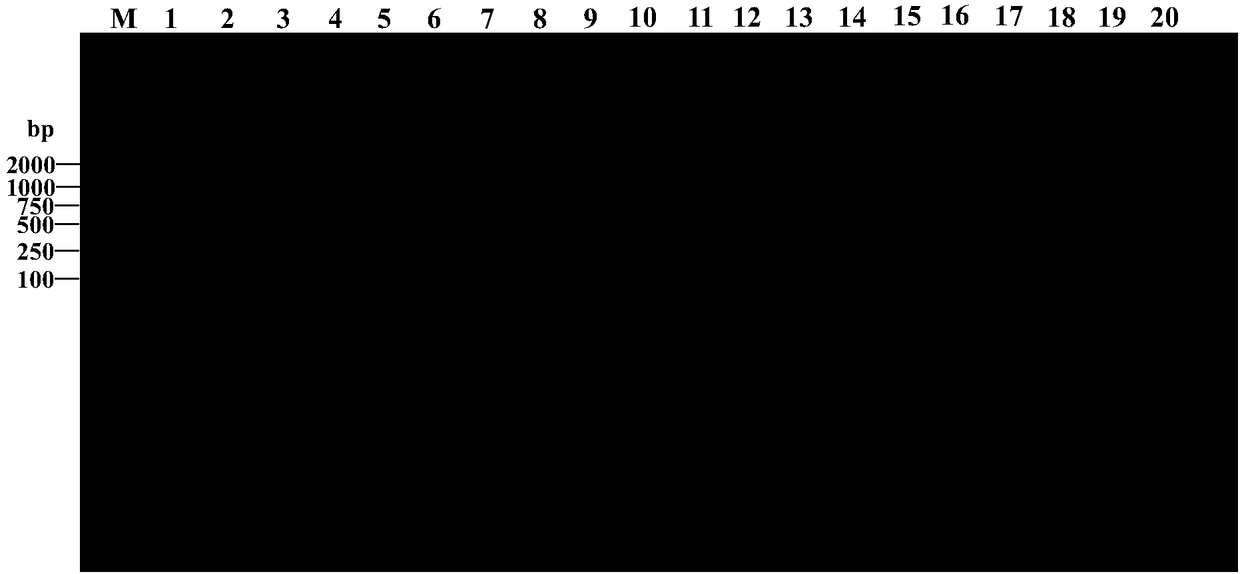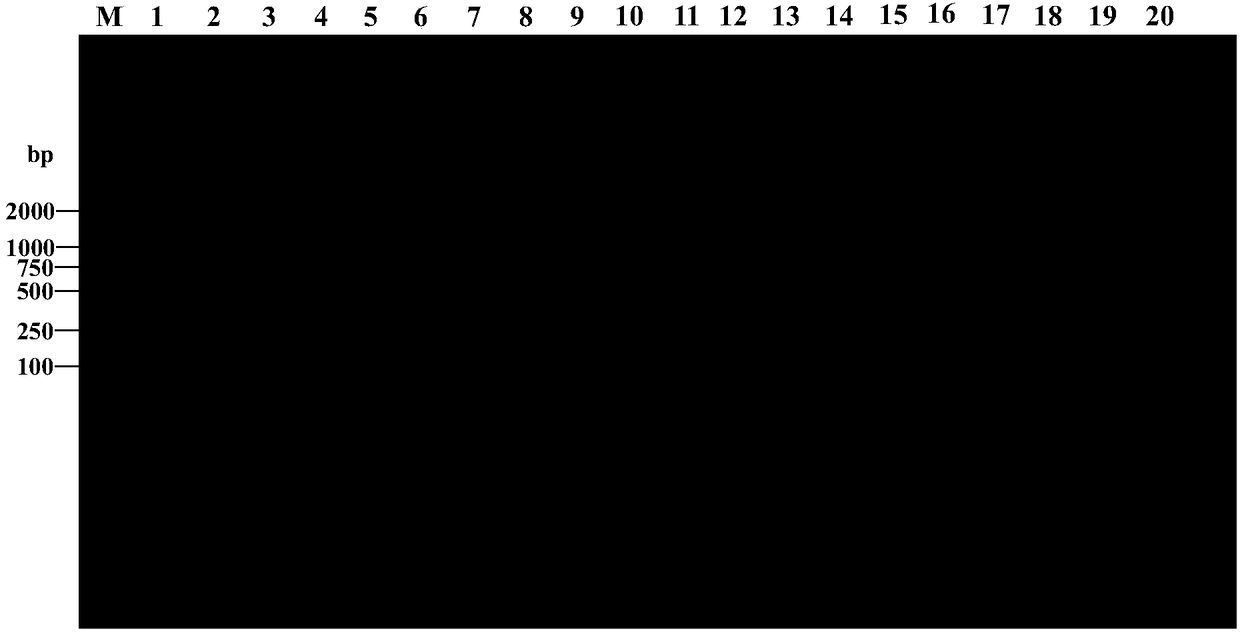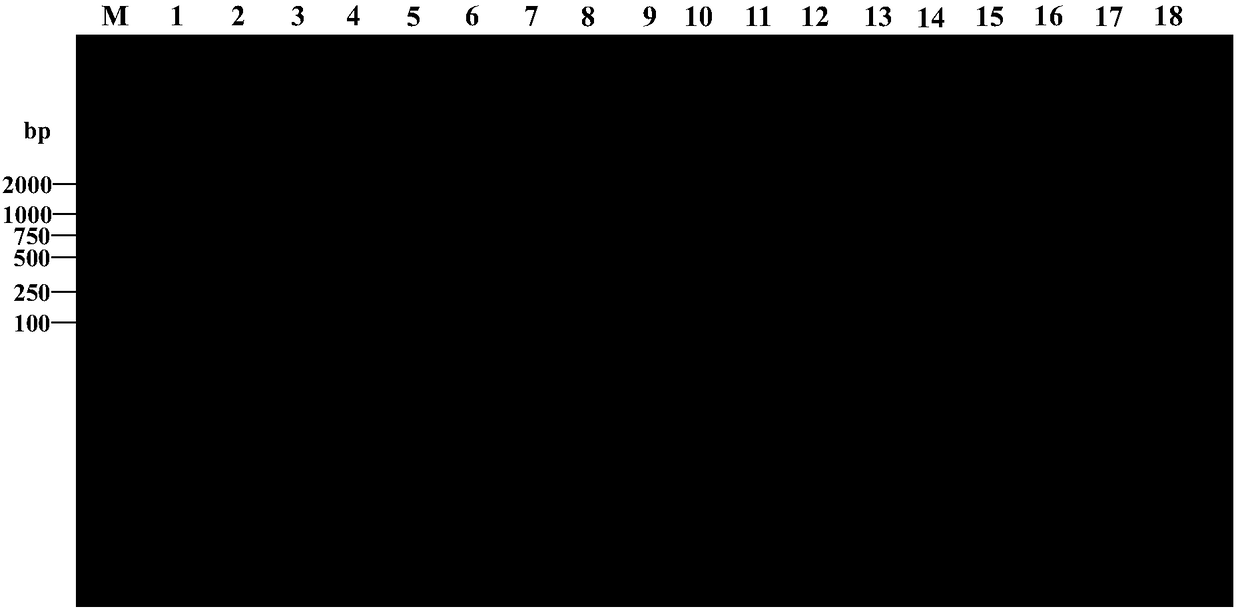Nested PCR detection kit and application thereof to detection of verticillium dahliae
A detection kit and a technology for Fusarium wilt bacteria are applied in the fields of identification and prevention, and detection of garden plant diseases, and can solve the problems of difficult detection, low proportion of cotton Verticillium wilt bacteria, and unsuitability for rapid detection of Verticillium dahliae.
- Summary
- Abstract
- Description
- Claims
- Application Information
AI Technical Summary
Problems solved by technology
Method used
Image
Examples
Embodiment 1
[0039] Example 1: Nested PCR detection of cotinus fusarium wilt in plant rhizosphere soil
[0040] Detection of Fusarium wilt fungus in soil. Soil samples include: (1) normal pure forest sumac rhizospheric soil; (2) diseased pure forest sumac rhizospheric soil; (3) the rhizospheric soil of S. arborvitae; (3) the rhizospheric soil of Spiraea trilobata; 4) soybean rhizosphere soil; (5) sandy cypress rhizosphere soil. Each soil sample was tested in triplicate. Specific steps are as follows:
[0041] Extraction of DNA from plant rhizosphere soil
[0042] About 0.25 g of the soil sample was taken, ground with liquid nitrogen, and DNA was extracted according to the operation steps of the Tiangen Soil Genomic DNA Extraction Kit (DP336) to obtain a DNA sample.
[0043] First round of PCR amplification
[0044] Use primer P1 and primer P2 (see the table below for the specific sequence) to amplify the DNA sample extracted in (1) (as template DNA). The PCR reaction system is: to...
Embodiment 2
[0053] Example 2: Nested PCR detection of cotinus fusarium wilt in plant leaves
[0054] Extraction of plant leaf DNA
[0055] About 0.25 g of plant leaf samples were taken, ground with liquid nitrogen, and DNA was extracted according to the operation steps of the high-efficiency plant genomic DNA extraction kit (DP350) to obtain DNA samples.
[0056] First round of PCR amplification
[0057] Use primer P1 and primer P2 to carry out PCR amplification on the extracted DNA sample (as template DNA). The PCR reaction system is: total reaction volume 25 μL: template DNA 1 μL, 5U / μL Taq enzyme 0.2 μL, 10×PCR reaction buffer (containing 100 mM Tris-HCl buffer solution with pH 8.3, 15 mM MgCl2 and 500 mM KCl) 2.5 μL, 2.5 mmol / L d NTPs mixture 2.0 μL, 10 μmol / L primers P1 and P2 each 1 μL, sterile double distilled water Make up to 25 μL. The reaction mixture was amplified on a BIOMETRAT-Gradient gradient PCR instrument. The reaction program was: 94°C pre-denaturation for 5 minut...
PUM
 Login to View More
Login to View More Abstract
Description
Claims
Application Information
 Login to View More
Login to View More - R&D
- Intellectual Property
- Life Sciences
- Materials
- Tech Scout
- Unparalleled Data Quality
- Higher Quality Content
- 60% Fewer Hallucinations
Browse by: Latest US Patents, China's latest patents, Technical Efficacy Thesaurus, Application Domain, Technology Topic, Popular Technical Reports.
© 2025 PatSnap. All rights reserved.Legal|Privacy policy|Modern Slavery Act Transparency Statement|Sitemap|About US| Contact US: help@patsnap.com



